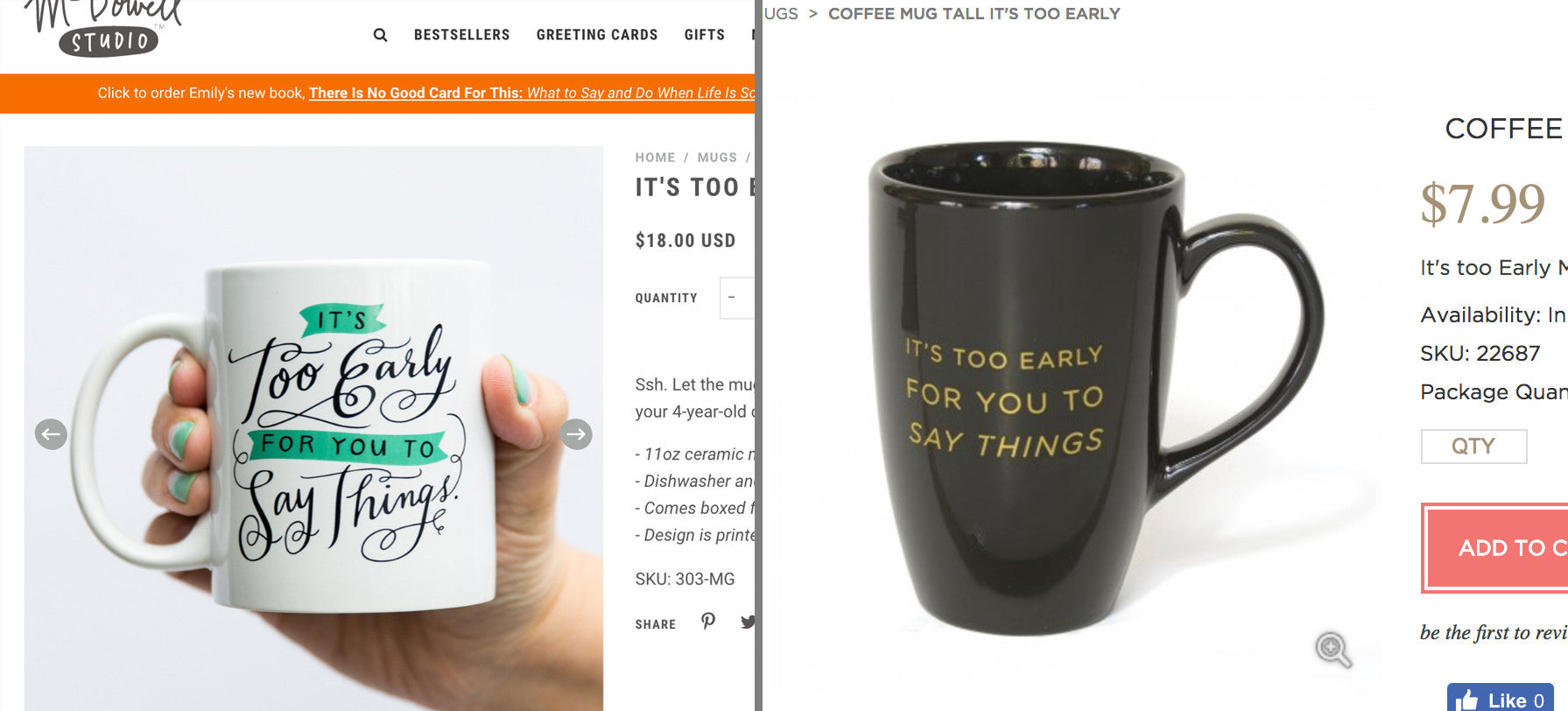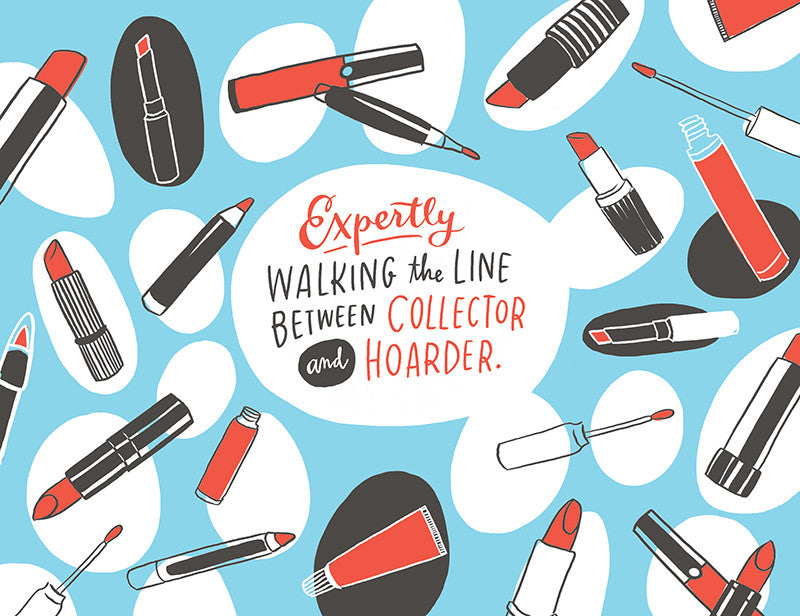In case you missed it, we recently released a new product category: screen printed zipper pouches.
When I started designing these pouches last summer, I made a big mistake. Sapling Press, another writing-driven stationery & gift brand that I love, had just launched a collection of zipper pouches, and the owner Lisa also happens to be a good friend of mine. (Note: my decision in this story would have been the same if we didn’t know each other, or even if we were enemies. Not that I have enemies. But you know.)
I should have looked at Sapling’s pouches before I started doing mine, just to make sure I stayed far away from their ideas. But I didn’t think to do that.
As it turns out, I ended up writing the same joke about lipstick they did.

Oops. I mean, it’s an unlikely coincidence, but not completely outside the realm of possibility. Both brands use a lot of observational humor, and this is a universal truth about how we (irrationally) feel about lipstick.
There are 3 ways I could look at this:
- I didn’t see theirs first and I didn’t copy it, so why does it matter?
- Even if I did copy it, the art on mine looks totally different, so who cares?
- I didn’t intentionally copy it, but theirs existed first, and the net result—diminishing the uniqueness of their product – is the same, whether I copied it or not.
#3 is the only one I felt good about, and here’s why:
This is a very specific piece of writing (like, it’s not a phrase like “lady boss” or “YAY”). Even if the art on mine is different, if we sell something that says the same, very specific thing, it diminishes the unique value of the product Sapling created. And it’s on us as creators to hold ourselves to a standard of integrity and respect other people’s work.
So, Lisa and I talked about it because we are grown adults, and we came to the agreement that I’d sell through the first print run that we’d already paid for, but once that run sold out, I’d change the line of copy before reprinting it. I’m happy to do this, and I feel like a dumbass for not being more careful before developing my work.
* * *
There’s a lot of gray area around what constitutes “original” writing in the stationery and gift industry. A lot of products have writing on them, and for many brands, the writing comes secondary to the design. Most of the writing is really short, too, which means it’s hard for anyone to fairly take creative ownership over it. Nobody can lay claim to things like “I can't even” or “hustle hard” or other basic expressions/idioms/adages.
But when you get into more creative and specific territory with the writing, that’s where it starts to become really not cool to use copy that someone else wrote without their permission. It might be technically legal, due to the fact that some of this writing is too short to officially copyright in a way that would hold up in court, but it’s a really shady thing to do. Why? Because someone else worked hard to write that thing you just put on your tote bag, and you’re now profiting from that person’s hard work. Copywriting is a skill that’s just as hard as designing/illustrating – and I know, because I do both.
If you put effort into coming up with a funny idea or concept and really working at the writing, it really sucks to see it transformed into a nameless meme on Pinterest or Instagram, because the next, inevitable step is that it’ll start showing up on other people’s products.

I can’t do anything about this, legally. But does it really suck? Yes, because it diminishes the unique value of a thing I worked hard to write, create, and sell.
We all have different ways of doing things and different ideas about where the integrity line gets drawn. But this kind of stuff comes up a lot in our industry, and I know sometimes people aren’t sure what they should do. So I wanted to share this story in order to let you guys know what I did when it came up for me, and explain why I made those choices.
BTW, here’s the art for the new version of our lipstick pouch, coming in late June!



